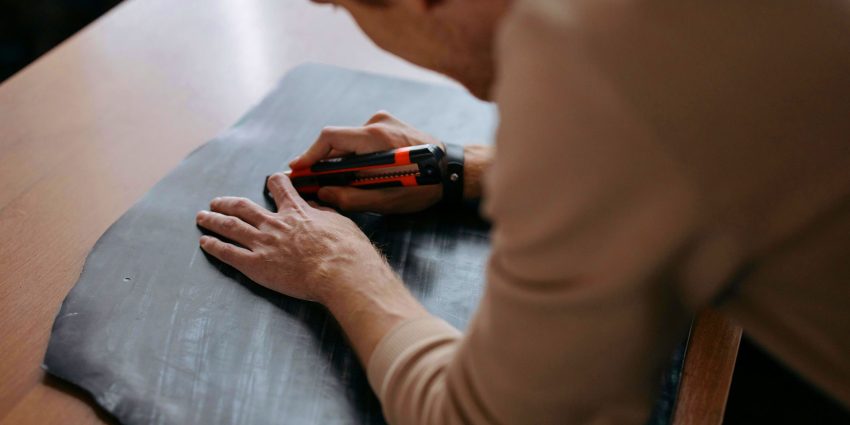Ask any seasoned upholsterer, and they’ll tell you, the craft isn’t just about making things look nice. It’s about structure, tension, flow, and finish. What looks effortless now took years of trial, error, and sweat to get right.
And if they could go back in time? Most would have a few words for their younger selves.
Invest in Good Tools Early
You can wrestle with a dull staple puller or slice fabric with discount shears for only so long before you realize: the tool matters. More than you think.
A sharp regulator saves you time. A well-balanced tack hammer saves your wrist. A durable stretcher prevents tear-outs and sloppy corners.
Most beginners focus on the materials, the velvet, the webbing, the trim, but the smart ones learn fast: the quality of your tools determines the quality of your work.
Cheap Materials Will Teach You Expensive Lessons
It’s tempting to cut costs when you’re learning. But low-end foam, weak frames, and poorly woven fabrics tend to backfire. They behave differently. They break under pressure. They make you look worse than you are.
Working with quality materials may stretch your budget, but it sharpens your skills. You learn the right way to fold, pull, and tuck without fighting the product every step of the way.
Prep Is Half the Battle
Early on, you just want to get to the good part, the stretching, the finishing, the reveal. But every pro will tell you: preparation is everything.
Take time to strip the piece fully. Tighten the frame. Check the joints. Clean off old glue. Re-web properly.
What happens under the fabric matters just as much as what’s on top. If the structure’s off, the finish won’t hold.
A Few Things Pros Wish They Knew Sooner
Ask around, and you’ll hear some of the same regrets and revelations over and over. Here are a few lessons learned the hard way:
- Always pre-fit your fabric before final tacking
- Learn to sew, machine and hand, early in your career
- Don’t underestimate how much padding changes the final shape
- Keep your blades razor sharp, and change them often
- Use the best thread you can afford, especially on tight seams
Symmetry Doesn’t Just Happen
It’s easy to eyeball your tacks or fold without marking lines when you’re in a hurry. But those little cheats? They’ll haunt you. Measure more. Mark with chalk. Use guides. Slow down and align every seam, tuck, and welt. Master upholsterers live and die by their layout.
And when it’s done right? You can see the difference from across the room.
Keep a Kit That Works for You
As you gain experience, you’ll build a toolkit that feels personal. It won’t look like anyone else’s, and that’s the point. You’ll favor certain shears, fall in love with a particular mallet, rely on one specific awl that never lets you down.
Over time, your hands will know exactly where to reach and what to trust.
The Wisdom Comes with the Work
There’s no shortcut to mastery. But there are better paths. Better tools. Smarter choices.
If you’re just starting out, listen closely to those who’ve been at it for decades. Their lessons were earned with busted knuckles, wasted yards, and the humbling weight of experience.
And if you’re in the thick of it now? Good. That means you’re on your way. Just don’t forget—the pros didn’t start perfect. They just kept going, one staple at a time.

